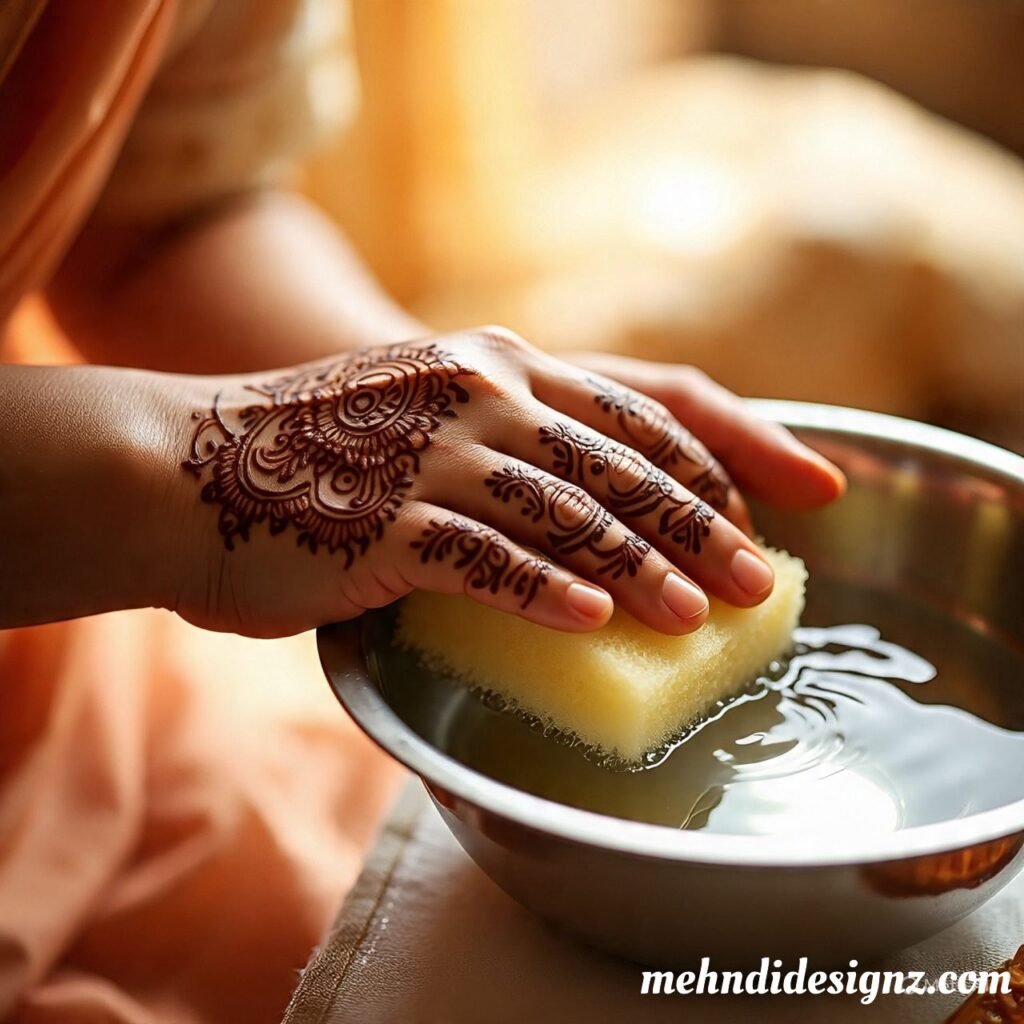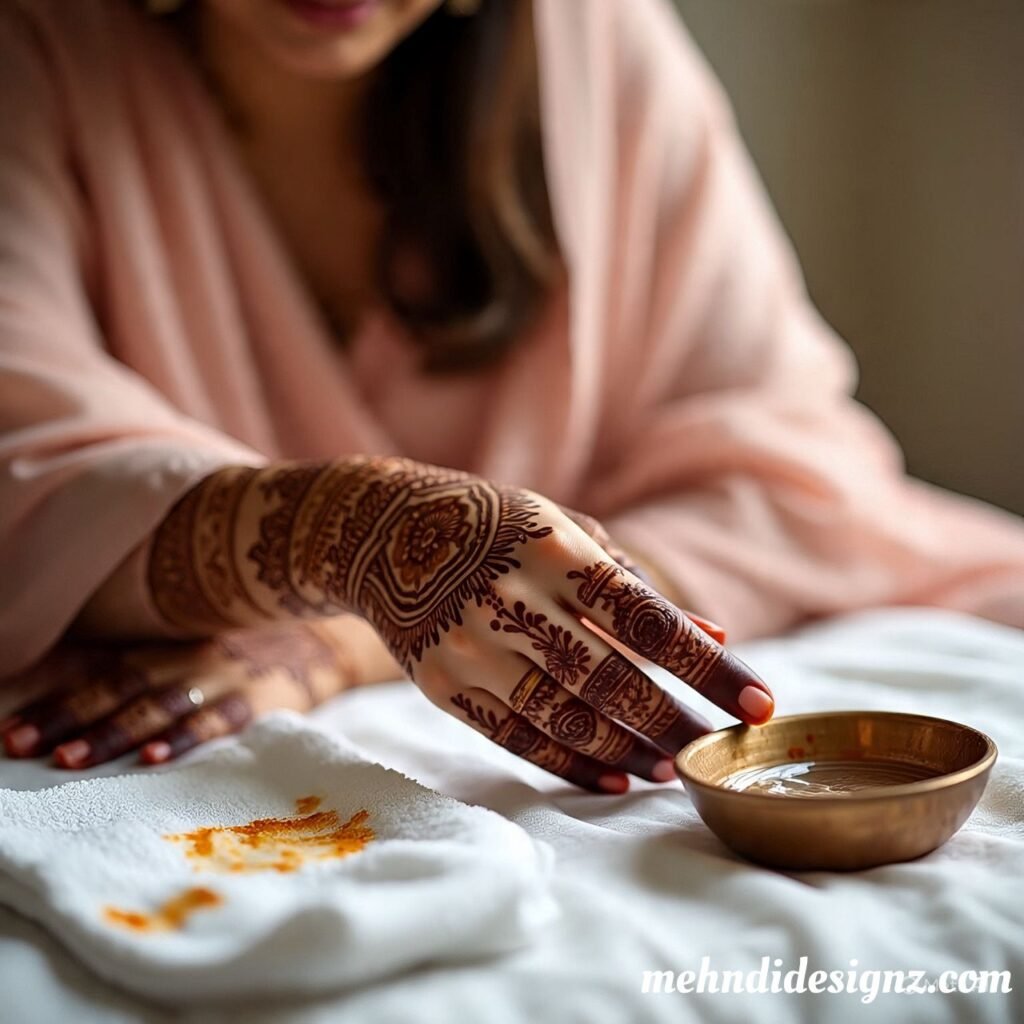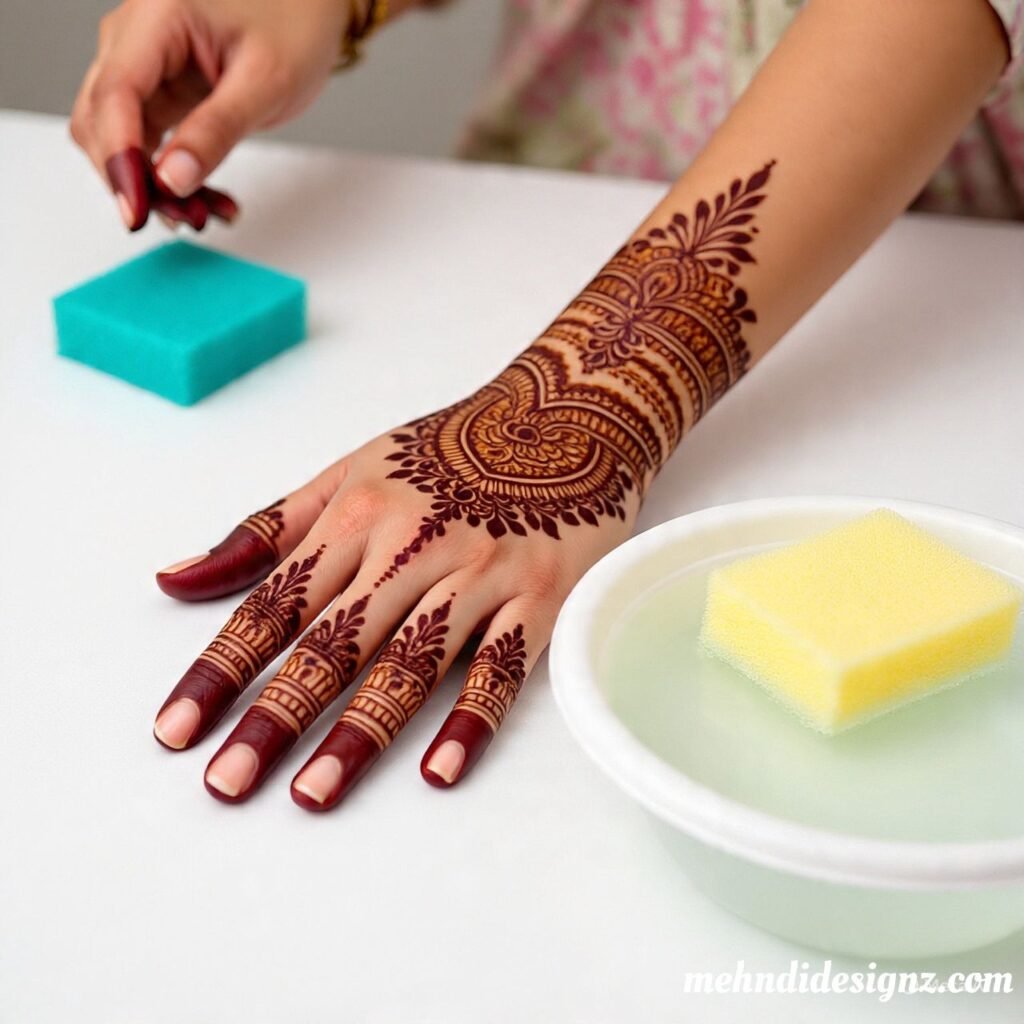Mehndi (henna) is a beautiful art form used for centuries to decorate the hands and feet. It plays a key role in cultural, festive, and bridal traditions across South Asia, the Middle East, and North Africa. However, once the celebration is over or if the color didn’t turn out as expected, you may want to remove henna from your hands quickly and safely.
Mehndi stains naturally fade over time, usually lasting 7–14 days depending on skin type and aftercare. But if you’re looking for ways to speed up the process or lighten the color for aesthetic or professional reasons, there are several home remedies and techniques you can try. This blog explores the most effective methods, tips, and precautions for removing mehndi from hands without damaging your skin.
Table of Contents
ToggleWhy Do People Want to Remove Henna Early?
Uneven or patchy stains
Faded designs before an important event
Professional appearance requirements
Personal preference or design dissatisfaction
Switching to a new design
How to Remove Henna from Hands—10 Effective Methods
1. Exfoliation with Scrub or Loofah
One of the easiest ways to fade mehndi stains is through exfoliation. Use a gentle body scrub or a loofah to scrub your hands in circular motions. This helps remove the top layer of dead skin cells where the henna is stained.
How to do it:
Wet your hands with warm water.
Apply a body scrub or use a loofah.
Scrub gently for 5–10 minutes.
Rinse with lukewarm water and apply moisturizer.
Tip: Repeat twice a day for best results, but avoid over-scrubbing to prevent irritation.
2. Lemon Juice and Baking Soda
Lemon juice acts as a natural bleaching agent, while baking soda is a mild exfoliator. Together, they can help lighten mehndi quickly.
How to do it:
Mix 1 tablespoon of lemon juice with 1 tablespoon of baking soda.
Apply the paste on the stained area.
Leave it for 10 minutes.
Scrub gently and rinse with warm water.
Caution: Avoid this method if you have sensitive or dry skin, as it may cause irritation.

3. Salt Water Soak
Salt is known for its natural cleansing and skin-brightening properties. Soaking your hands in warm salt water helps in breaking down the henna pigments.
How to do it:
Add 2 tablespoons of salt to a bowl of warm water.
Soak your hands for 20 minutes.
Gently rub the skin while soaking.
Pat dry and apply lotion.
Tip: Do this once a day until the stain fades.
4. Toothpaste Method
Toothpaste contains mild abrasives and cleansing agents that can help lift mehndi stains from the skin.
How to do it:
Apply a layer of white toothpaste (not gel) on the mehndi area.
Let it dry completely (about 10–15 minutes).
Scrub gently and rinse off.
Bonus: Toothpaste also leaves a cooling sensation on the skin.
5. Micellar Water or Makeup Remover
Oil-based makeup removers and micellar water are gentle and effective at breaking down pigments, including mehndi stains.
How to do it:
Soak a cotton pad with micellar water or remover.
Rub over the stained area in circular motion.
Repeat until the stain lightens.
Great for: Sensitive skin types who prefer non-abrasive methods.
6. Bleach Cream
Facial bleach creams can lighten henna stains when used carefully. These products contain hydrogen peroxide, which helps fade pigmentation.
How to do it:
Apply a small amount of bleach cream as per instructions.
Leave for 5–10 minutes.
Rinse thoroughly with cold water.
Caution: Use sparingly and not more than once in

7. Olive Oil and Salt Scrub
This method combines natural oils with exfoliation for a nourishing yet effective mehndi removal.
How to do it:
Mix 1 tablespoon olive oil with 1 teaspoon salt.
Massage onto the stained area for 5–10 minutes.
Wipe off with a cotton pad or rinse with warm water.
Benefit: Moisturizes your skin while fading the henna.
8. Warm Milk Soak
Milk contains lactic acid, which gently exfoliates the skin. A warm milk soak is both relaxing and effective in removing light stains.
How to do it:
Warm up a bowl of milk (make sure it’s not too hot).
Soak your hands for 15–20 minutes.
Rub gently and rinse.
Perfect for: Light stains or post-henna residue.
9. Swimming or Hot Showers
Extended exposure to chlorine and warm water softens skin and helps fade mehndi naturally. If you’re not in a rush, this passive method works over time.
How to do it:
Soak in a bath or take longer warm showers.
Pat dry and moisturize.
Bonus: Great excuse for a spa day!
10. Hair Conditioner or Oil Massage
Both conditioner and body oils (coconut or baby oil) help loosen mehndi stains by softening the upper skin layers.
How to do it:
Massage oil or conditioner on your hands.
Let it sit for 20–30 minutes.
Rub off gently with a towel or washcloth.
Great for: Dry or sensitive skin.

Tips to Remember While Removing Mehndi
Always moisturize after using scrubs or drying agents.
Avoid harsh chemicals if you have allergies or sensitive skin.
Be patient—removal may take several attempts.
Avoid using nail polish remover or acetone; these damage your skin.
Perform a patch test for lemon, bleach, or baking soda methods.
What Not to Do When Removing Mehndi
Don’t use sharp tools or blades to scrape mehndi.
Don’t over-exfoliate in one day—skin damage isn’t worth it.
Don’t mix too many remedies at once—stick to one or two methods.
FAQs About Removing Mehndi from Hands
Q1: How long does it usually take for mehndi to fade naturally?
Typically, henna lasts between 7–14 days, depending on skin type, location, and aftercare.
Q2: Can I remove henna overnight?
Complete removal overnight is unlikely, but methods like exfoliation, lemon juice, or bleach can significantly lighten it in a day or two.
Q3: Is it safe to use bleach to remove mehndi?
Yes, but use facial bleach in moderation and perform a patch test. Avoid if you have sensitive or broken skin.
Q4: Does toothpaste really help remove mehndi?
Yes, white toothpaste with baking soda and hydrogen peroxide can help lighten stains effectively.
Q5: Which is the fastest method to remove mehndi?
A combination of lemon juice and baking soda or bleach cream tends to give the fastest results but must be used cautiously.
Q6: Can oil remove henna stains?
Yes, especially olive oil or coconut oil. While it may not remove mehndi completely in one go, it softens the stain and helps fade it faster with repeated use.
Q7: Is removing mehndi harmful to the skin?
Not if you use gentle, natural remedies. Avoid harsh chemicals, over-scrubbing, or mixing multiple treatments at once.
Final Thoughts
Mehndi fading is a natural process, but sometimes you just want it gone sooner—whether due to a work event, a fashion choice, or simply because the design didn’t turn out as expected. With the right home remedies, patience, and gentle care, you can remove henna from your hands safely and effectively.
Always prioritize skin health and hydration while attempting these methods. Remember, henna is a beautiful tradition—but when it’s time to let go of it, now you have the know-how to do it right



